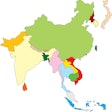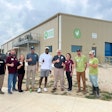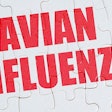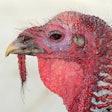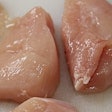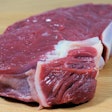Sponsored by USPOULTRY, the 2022 Environmental Management Seminar emphasized the practical implementation of environmental science in order to help attendees define, evaluate and reach their environmental program goals. Ranging from regulatory updates to stormwater permitting, analytical testing, water reuse, emissions, odor abatement and more, this seminar was full of real-world applications.
John Pierson, principal at Pierson Enterprises, presented a case study of Whole Effluent Toxicity (WET) testing and how it is used as a tool to evaluate compliance to wastewater discharge standards. Using specific measured values, he provided a step-by-step walk through of the reasons for using WET testing and provided examples of how the testing is performed.
Dr. Brian Kiepper, associate professor at the University of Georgia, spoke about a perennial issue in environmental management: water reuse. He traced the history of water use in poultry facilities over several decades, providing context to the extent to which reuse water is relied upon for sustainable, efficient operation. Delving into regulatory requirements for water use in the processing plant, Kiepper explained how processors could achieve compliance. He also drew a distinction between regulatory requirements and guidance materials offered by the Food Safety and Inspection Service. After explaining these distinctions, Kiepper explored several different options for structuring a water reuse system, with and without treatment, and incorporating them into a facility’s wastewater program.
Laura Sands, principal at Pinion, presented on sustainability initiatives, specifically greenhouse gas emissions reporting to customers and suppliers. Sands related that transparency is being demanded of food suppliers and that organizations need to have a mechanism to track and report their greenhouse gas emissions. The differences between Scope 1, 2 and 3 emissions were explained, and the challenges of determining Scope 3 greenhouse gas emissions inventories were explored. She advised attendees that they should set a science-based target to have a defined, measurable set of goals that can translate into value for customers and suppliers.
Katherine Bazemore, president and CEO of Volatile Analysis Corporation, offered a comprehensive presentation on mitigating odors using odor assessment. The science of odors was discussed, including detectability thresholds and the perception of odor by a person compared to analytical machinery. Combining human sensory evaluation with analytical chemistry tools allows for specific problem-causing odors to be identified. She noted that different chemical compounds have different volatilities at different times, and it is important to understand where the problematic odor is being encountered and what exactly is causing it.
USPOULTRY’s annual Clean Water Award winners were also announced during the seminar. The award program recognizes poultry facilities that are excelling in their efforts to treat wastewater and reduce potable water demand by reusing treated wastewater where possible. Awards are given in two categories: full treatment and pretreatment. This year, Tyson Foods’ broiler processing plant in Dardanelle, Arkansas, was selected the winner in the full treatment category. Pilgrim’s Arcadia, Wisconsin, broiler processing plant was selected as the winner in the pretreatment category. Honorable mention with distinction awards in the full treatment category were presented to Tyson Foods in Union City, Tennessee, and Wayne-Sanderson Farms in Tyler, Texas. The Tyson Foods’ Berry Street facility in Springdale, Arkansas, was recognized with an honorable mention with distinction award in the pretreatment category.





